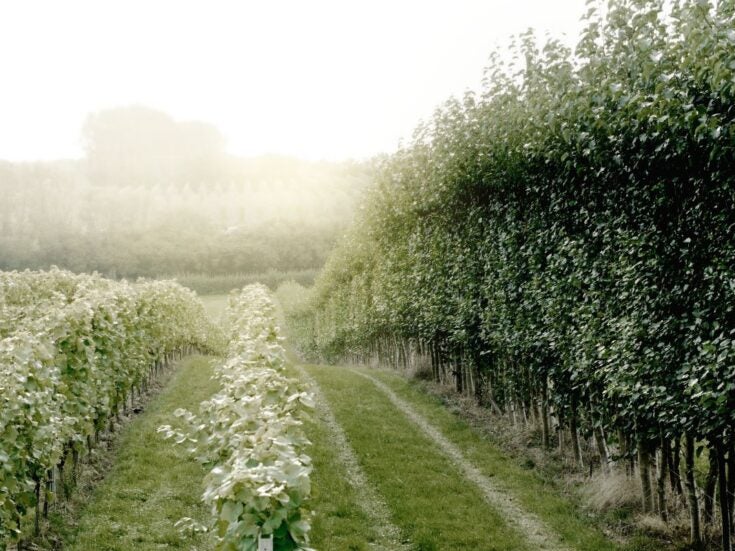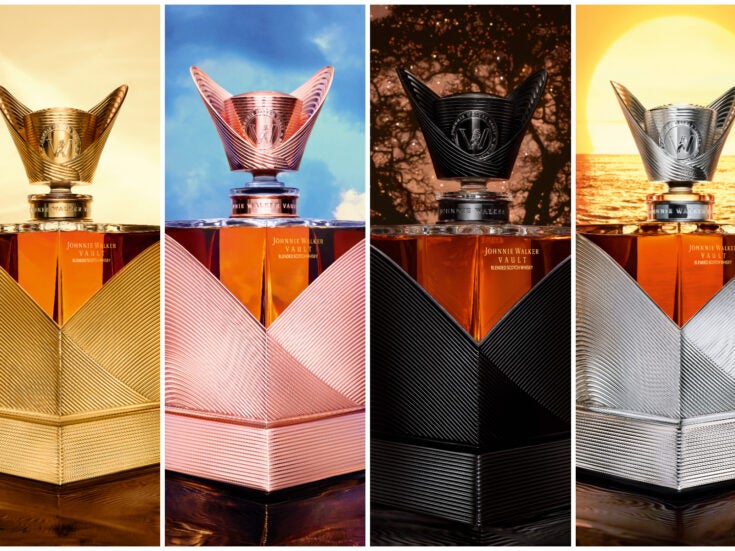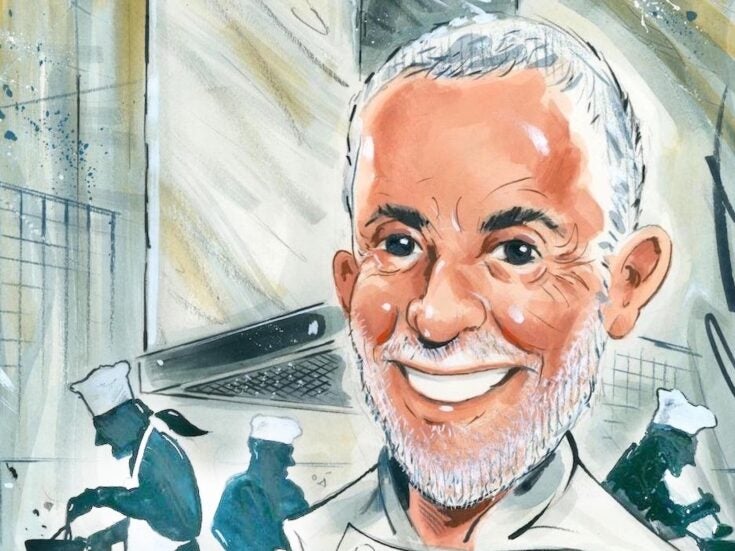
Christopher Silvester says you don’t need a Master of Wine’s nose to sniff out the profits possible for an investor in wine
‘IN A WAY, I think the financial crisis has done us a favour,’ says Stacey Golding, who is investments director of Premier Cru Fine Wine Investment, a family-run brokerage founded back in 1992. ‘People used to say “as safe as houses” or “as good as cash in the bank”, neither of which has necessarily held true given falling house prices and near-zero interest rates.’
When Alan Rayne, managing director of Magnum Fine Wine Investment, invented the wine-investment business back in the 1970s, interest rates were in the low teens and although wine was a tax-efficient asset, since it is classified as a wasting asset and therefore not subject to capital gains tax, the margin between annual returns from wine investment and those from a building-society savings account was only a few percentage points. Now that gap is a gulf, with wine investment continuing to bring in an annualised return of 12 to 15 per cent or more.
The financial crisis has also tested and not found wanting the famous propositions that wine prices are non-correlated to mainstream investment assets and that fine wine is the last asset class to fall and the first to rise. According to the Fine Wine Fund, the compound annual growth rate of the fine wine market for the decade immediately following downward corrections has ranged from 15 per cent (1999-2007: following the 1998 Asian financial crisis) to 23 per cent (1975-1984: following the 1973 oil crisis and subsequent stock-market falls).
The downturn of around 19 per cent in the last three months of 2008 was short-lived, despite the new presence in the market of various wine investment funds, which suffered some substantial redemptions. ‘The wine market has survived evolution, revolution and war,’ says Stacey Golding. ‘Every time it comes back stronger.’
While the wine funds lost some clients during the financial crisis, both Magnum and Premier Cru, which provide discretionary management of portfolios, had extraordinarily high retention rates during the financial crisis. ‘We could count on our hands the number of clients who left us,’ says Premier Cru’s Golding. ‘We had fewer than ten clients leave.’
One of the major advantages of wine investment over the years has been that it is exempt from capital gains tax. While this appeal diminished somewhat a couple of years ago when CGT was reduced to 18 per cent, it has become even stronger now that CGT has risen again to 28 per cent. As an alternative, investment in fine wines (which means Bordeaux and DRC wines only) retains its powerful appeal.

What is more, the Bordeaux 2009 vintage has received rave reviews. It is as good as the 2005, according to a survey of Liv-Ex members, who scored it 96 out of 100 and chose Latour as the wine of the vintage. Wine-market god Robert Parker has also given it a hearty endorsement, though he doesn’t like it as much as the 2005.
‘Throughout most of 2009 we saw quite a steady increase across the market. There were a couple of vintages which remained pretty flat like the 2005s and the 2003s, but most of the market was coming up. A lot more interest has been coming in from China. That market’s starting to gather quite a lot of pace and the prices of their favourite wines like Lafite and Carruades de Lafite have gone bonkers, which we’ve obviously taken full advantage of for our clients.’
IN JANUARY OF this year Premier Cru issued a press release saying that they expected wine prices to rise by about 20 per cent across the board in 2010. Already, prices have far exceeded that. ‘We’re just doing our annual valuations at the moment and we’re actually sending out valuations for clients who started invested with us as late as April this year, just because they’re making 10 to 15 per cent already. Also, we want to encourage their financial advisers — to show them that they’re doing the right thing by their clients.’
This is important because Premier Cru has been moving more towards attracting new clients as a product provider through IFAs as opposed to being a direct provider.
As an example of the sort of discretionary management Premier Cru offers, Stacey Golding cites Lafite 2000. She persuaded a lot of her clients to buy it en primeur in 2001, when it cost them £200 a case, and advised them to hold it for a very long time. Even this time last year, when it was £10,000 she was telling them not to sell. ‘When Lafite 2000 started to trade at £14,000 a case, and we could buy in Lafite ’08 and Mouton ’08, and still have six or seven thousand pounds left over for ’09, we started to trade for our clients,’ she says.
‘We are trading clients’ wines from 2001 at literally 600 per cent profit. Exactly nine years ago. That’s a massive, massive profit. And we’re putting them out of one Lafite and back into at least one Lafite, plus a Mouton, plus other first growths. That’s the kind of management clients look for.’
In 2008, Premier Cru made a big offer for an allocation of Lafite, paying well above market price at en primeur stage, because otherwise the negociants were bundling Lafite with other, less enticing wines and it was very difficult to buy it as a stand-alone. ‘Our decision wasn’t necessarily about being competitive in the market, it was about whether we thought the stock price would return the profit that we needed — a completely different thought process,’ says Golding.
‘So we paid open market, not the first time we’ve done this, and got a big parcel of Lafite, and it was originally being put out to our clients at £2,242 per case. Now, you could not buy it for less than £6,000. We’re right in the middle of our valuation run, so we’re looking at the entire client bank individually. We’re seeing over and over again portfolios showing 200, 300, 400 per cent profit. It’s wonderful.’
Stacey Golding thinks the 2009s are high-risk. ‘I believe the first growths are going to come out and go up in price and that will probably be that. As far as the rest of the market is concerned, we saw with the 2000s and 2005s, which were amazing vintages, that there were one or two periods in the first five years when the prices softened. Some of them softened a lot and some of them were just quite flat. It’s not uncommon with a great vintage, where it starts to be expensive, that you will see a fall in the price before you start to see the steady rise that eventually follows.’
How does the wealth-management sector perceive wine investment? Many family offices and private asset managers have been slow to recognise the quality of fine wine as an investment product and the level of returns it generates. ‘It’s the IFAs for the high-net-worth individuals that are the market for us at the moment,’ says Gavin Saffer, Premier Cru’s global sales director, who is also married to Stacey Golding.
‘And the IFA market this year, from our point of view, has gone from the Third Division into the Premier League. But the wealth managers are quite tough because they’re a different breed. We’re finding it much easier with the Far Eastern wealth managers than we are here.’
SAFFER SPENDS ABOUT seven months of the year in the Far East, visiting Hong Kong, the Philippines, Taiwan, Bangkok, mainland China (Shanghai and Beijing) and Japan. In the past, Premier Cru’s client base was much more weighted towards the UK, but over the past few months, half of Premier Cru’s new clients are resident in Asia.
‘We’ve had a presence in Asia for three-and-a-half years, so we’ve been building our brand,’ says Stacey Golding. ‘Wherever wealth managers want to organise seminars for their clients and make presentations, as long as there are a few days packed full of meetings, then Gavin goes.
‘He’ll give presentations to clients and he will also train the wealth manager or adviser in how the product works. We are the only company that has a dedicated department to give support to the financial sector.’
WINE LINES
• Magnum Fine Wine Investment: £2,500 minimum subscription; 5 per cent commission on sales
• Premier Cru Fine Wine Investment: £10,000 minimum subscription; annual management fee: 1.75 per cent of portfolio value
• The Wine Investment Fund: £10,000 minimum subscription, locked in for five years; 5 per cent initial fee, 1.5 per cent annual management fee, and 20 per cent performance fee; not CGT-exempt
Above: Thiessen Wijnkoopers is a wine merchant with premises in a 17th century building in Maastricht. From The Most Beautiful Wine Cellars in the World







